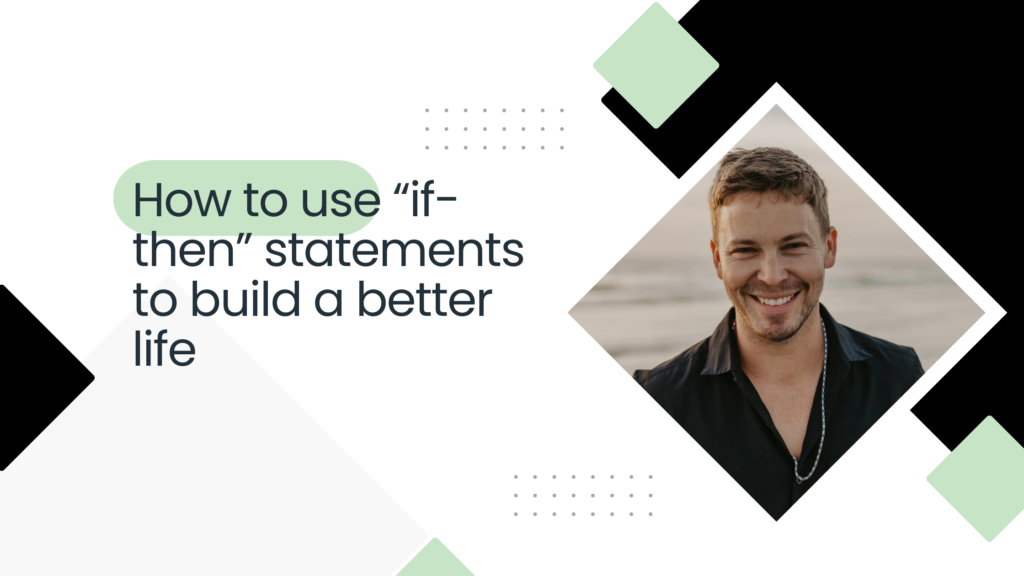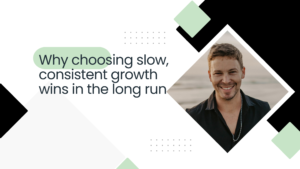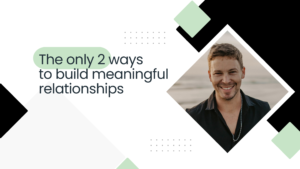I went to a small private school where we were required to take three years of Latin and two years of logic.
Looking back, Latin has been as useless as I thought it was back then, but Logic has proven valuable. The purpose of Logic was to develop our critical thinking and problem-solving skills by introducing us to formalized decision-making processes and common logical thought fallacies.
TL;DR: Logic was supposed to help us learn how to make smart decisions quickly.
One of the most important decision processes we were taught was building valid and helpful “if-then” statements.
What Are If-Then Statements?
If-then statements are essentially mental shortcuts that allow you to reach decisions faster. They’re a decision-making tool that helps you create automatic responses to situations in your life.
Living in the modern world, we are forced to make hundreds of decisions every day. To simplify and lower our cognitive load, our brains automate. One of the ways our brains do that is by building “if-then” habits and actions.
Some of these are good and some of these are bad.
Maybe you have some good if-then processes:
- If my wife is upset with me, then I bring her flowers
- If I’ve had a bad day, then I work extra hard in the gym
You may also have some bad if-then processes:
- If I’ve had a bad day, then I’ll have a drink to relax
- If I’m sitting in front of the TV, then I’m going to eat a snack
How to use “if-then” statements to create a better life:
We use “if-then” statements without thinking about them to automate life and lower our cognitive load, but we can use “if-then” statements to purposefully improve our lives and change behaviors as well.
We can create and leverage default “if-then” decision statements to help us overcome bad habits or build good ones by following a three-step process.
Here’s how:
Step 1: Identify a decision or habit loop you want to improve.
Action: Take time and make a list of the biggest problems you face in life, poor habits or routines you want to overcome, or actions you want to take but can’t seem to build a habit around.
Hint: you probably already have some negative “if-then” habits and routines built around them.
Step 2: Build a positive “if-then” decision statements.
Action: For each of the items put in the list above, create a positive “if-then” statement that supports your ultimate goal or habit.
Hint: when developing “if-then” decision statements, you should know what you’re ultimately trying to achieve to ensure they align.
Step 3: Put that statement into action and start practicing
Action: Start practicing new “if-then” decision processes. You won’t get it right all the time, but having identified what you want to achieve, what your current default action is, and what you want to do instead makes building new behavior patterns easier
Hint: if you can leave a note in the place where the “if-then” process takes place you’ll be even more likely to do the action you want to do
Where to start?
Start with your life’s biggest pain points and try and identify low-hanging fruit. Often, some of the most basic changes can have a massive impact on our lives.
That said, if you’re new to lifestyle design and working to incrementally build new habits and a better life understanding where to start, or what buckets to address first can be daunting.
Here are a few buckets and examples I think make sense to build “if-then” decisions around and help you get started
Health & Wellbeing:
- If it’s after 8 pm, then I am not going to eat any more food
- If I’m tired in the middle of the day, then I’ll do some light exercise
Spending & Finances:
- If I want to prepare for retirement, then I will put money into my 401k
- If we are going out and I’m trying to save money, I’m not going to buy alcohol
Relationships:
- If I am feeling lonely, then I will call a friend
- If my spouse is upset with me
Stress & Anxiety
- If I’m feeling overwhelmed, then I’m going to take a break and go on a walk
- If I’m panicking, then I’m going to pray and ask God for peace







